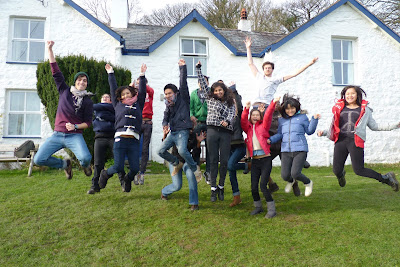Hi again, dear students!
Today we are going to talk about the first conditional. First of all, when do we use it?
We use the first conditional to talk about likely situation, things that are likely to happen. In Spanish you would say something like this: "si llueve, no iré al colegio", which in English would be: "if it rains, I will not go to school".
When you are stating this, probably it is a Sunday evening, you are at home, and you are looking out from your window, seeing the dark clouds approaching to each other. In that case, it is likely to rain, so you use the FIRST CONDITIONAL.
What about the structure? Oh well, that is really easy. You have two clauses:
Clause number 1: the condition, which you make with "if + verb in present simple"
Clause number 2: the result, which you make with the future simple tense (will).
Let's have a look at the example we gave before. "Si llueve, no iré al colegio", which would be "If it rains, I will not go to school". The two clauses are separated by a comma. First you have your condition (if it rains), and then you have your result (I will not go to school). So:
1st clause + comma + 2nd clause
1st clause: If + present simple of the main verb = If it rains
2nd clause: result, main verb with future simple will = I will not go to school
Thus: If it rains, I will not go to school.
However, can you say first your result and then your condition? Can you alter the order of the clauses? Of course you can! You just need to get rid of the comma in the middle then. Have a look at the example:
2nd clause + 1st clause = I will not go to school if it rains
Easy peasy, right? Well, have a look at the power point presentation attached by clicking on the image below and read a few more examples of first conditional sentences. And please, let me know if there is anything you do not understand by commenting on this entry!
 |
| By Pridatko Oleksandr - Ukraine, Public Domain, https://commons.wikimedia.org/w/index.php?curid=3651620 |
See you later,
Pablo.





